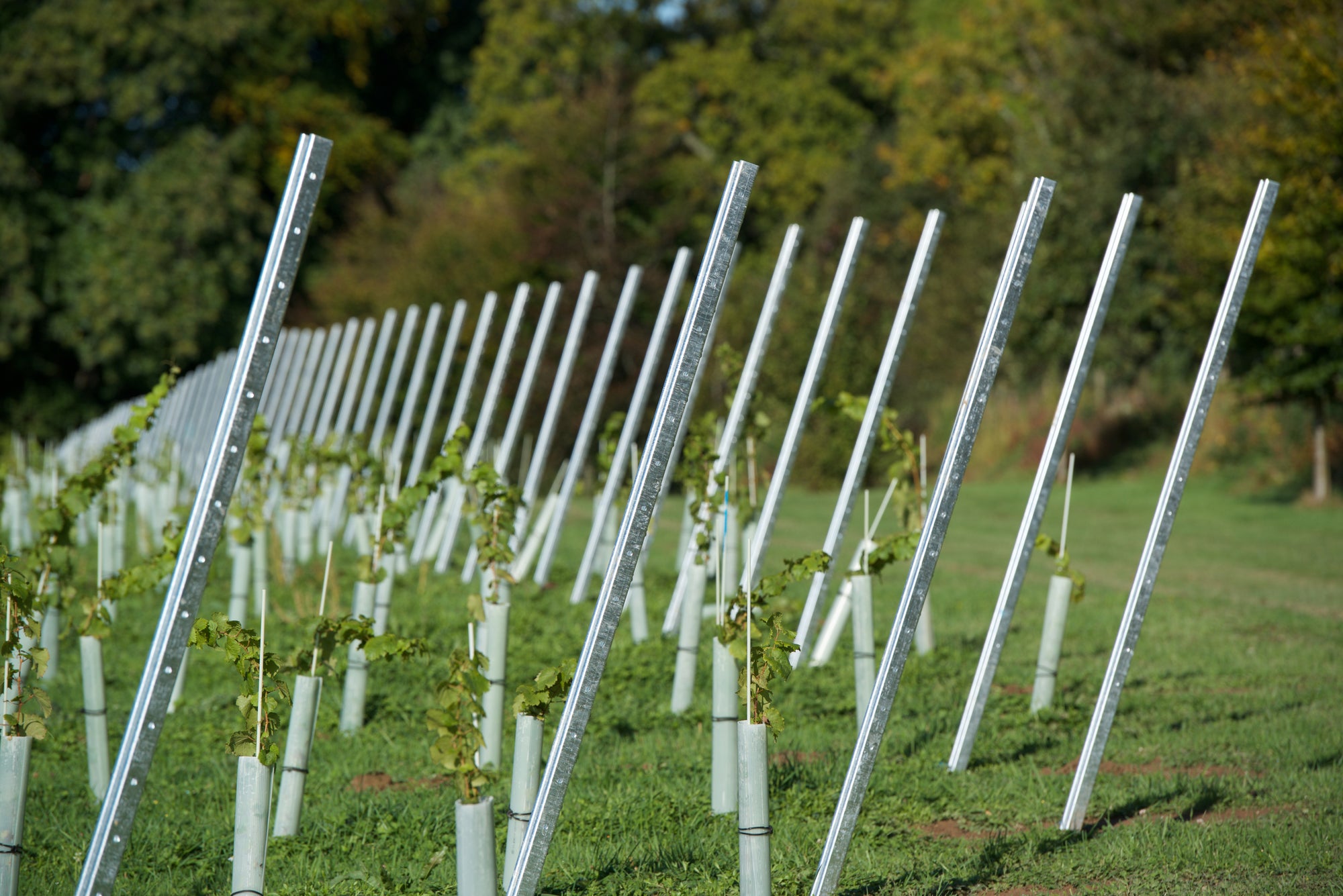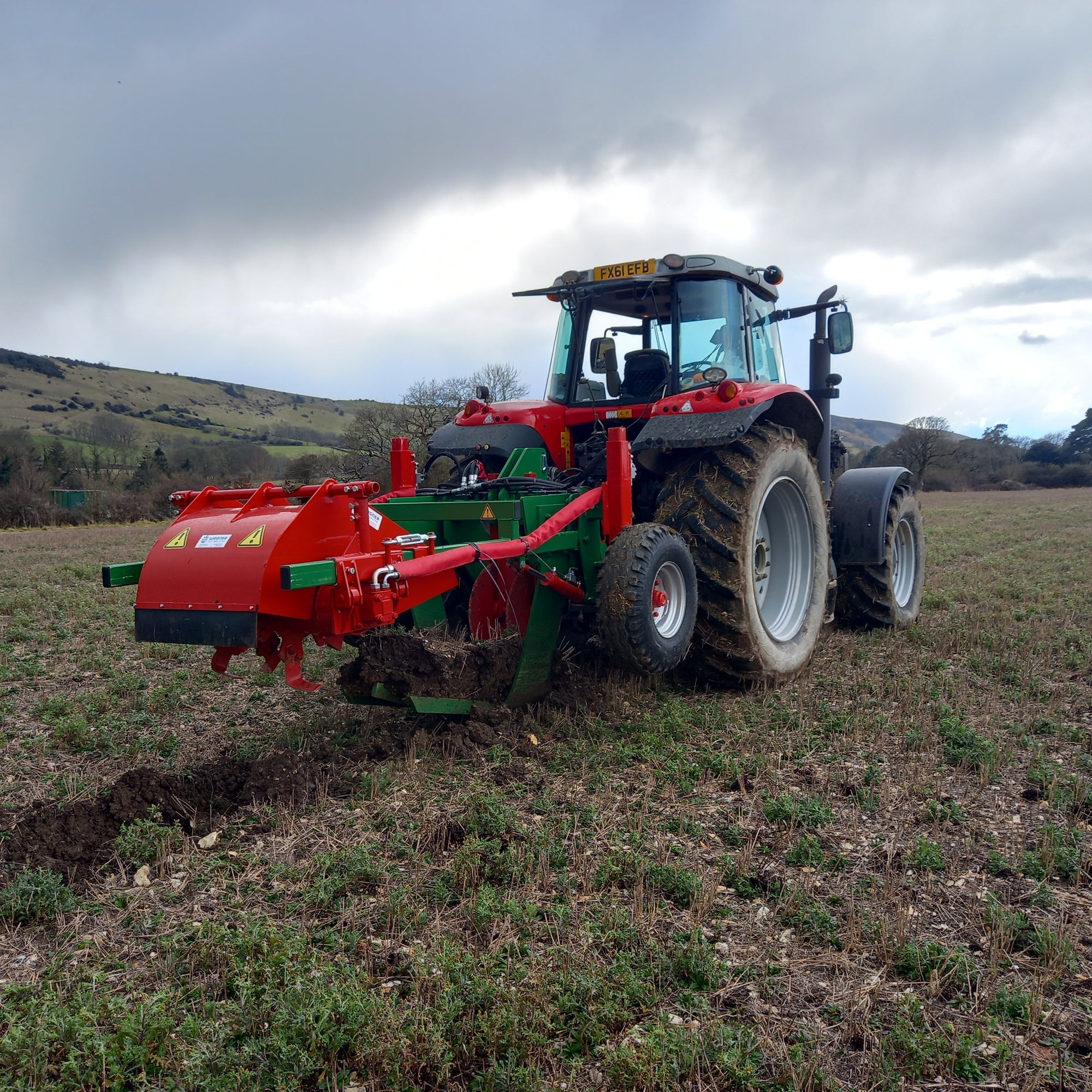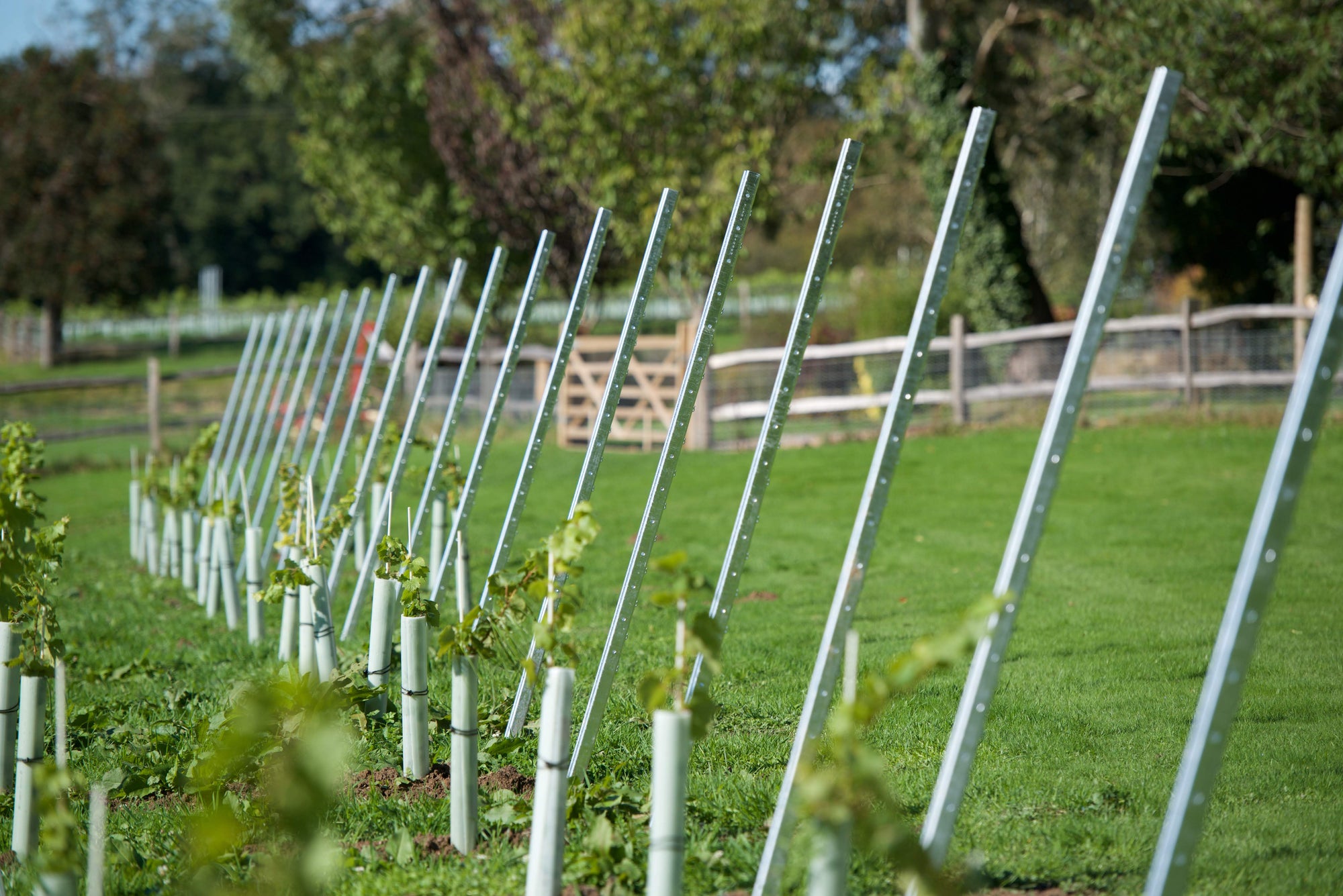

DON'T FENCE ME IN! CHOOSING THE CORRECT TRELLISING MATERIAL FOR YOUR VINEYARD
At this time of year, growers will be caring for newly planted vines and considering options for the installation of trellising. For new growers, this will be a time of much input into a new vineyard with the rewards seemingly far away. When all is said and done, the cost of the trellis and its installation can represent 50-60% of the initial cost of establishing a vineyard. It is also an area of investment where growers can be tempted with significant savings by opting for cheaper materials.
Unfortunately, far too often trellis systems are designed and adopted purely based on aesthetic reasoning with little concern for functionality. It should be remembered that the trellis system is essentially a tool whose function is more than just a support for the vines. When chosen properly in conjunction with soil type, intended culture system, and site specific concerns (exposure, etc.), it can reduce the annual labour costs associated with general vineyard management, as well as one-off costly repairs.
Why Do You Need a Trellis System?
The trellis system supports the vines and is essential in shaping the vineyard into an asset that can be cultivated efficiently in order to produce the best quality wine grapes with the least amount of input. Timing is crucial in quality vineyard management practices, and it is important that the structure of the vineyard enables the grower to respond rapidly and efficiently to its demands during the growing season. Quick and easy placement of the young vine shoots in an optimal spatial arrangement facilitates better spray coverage and penetration, and can results in larger crop of quality grapes that disease free.
The Options
Vine growers in the UK currently have a wide variety of trellising materials available to them. Wood posts come in a variety of lengths, diameters and treatments. A wide variety of steel posts are also currently on the market. The materials chosen should, at least, have a lifespan similar to that of the vineyard (i.e. 25-30 years or longer if managed correctly). Trellis replacement in situ is extremely laborious and can be destructive to the vines.
Trellis failures can be disastrous, as the collapsed vines may die due to trunk breakages, or at very least become a centre of infection for fungal diseases. Usually trellis failures occur due to additional fruit weight and the subsequent increased stress caused at weak trellis points. Such weaknesses may not be apparent until full crop levels are achieved 3-6 years later. It is important to repair the trellis immediately and ensure that the repairs are strong enough to last till after harvest when a more permanent repair can be made.
Weathering of the trellis system can cause problems. Soils with high levels of clay will retain a large amount of moisture and can lead to rotting of poorly treated wooden posts, or rusting of inadequately treated steel posts. The result of this kind of deterioration is usually only apparent when the posts break cleanly at the base. This kind of deterioration, coupled with a stress factor like a strong prevailing wind, can lead to the collapse of entire rows of the vineyard.
Wood posts should be properly treated in order to resist weathering, microbes and insects. In order to provide them with a longer lifespan, pressure-treated posts receive an application of wood preservative, like chromated copper arsenate or pentachlorophenol, before being subjected to high pressures in a pressure chamber. This process ensures the penetration of the preservative into the wood. Good quality pressure-treated posts can outlast lesser quality posts by 15 to 20 years. Do note that creosote or other oil-treated posts can be toxic to the vine roots.
Another consideration with wood posts is the diameter. Wood post strength increases exponentially with the diameter of the post. At the time of ordering that 5” round posts would be almost twice as strong as 4” round posts. Soil type should definitely be considered, as it will be twice as hard to hit 5” round posts into chalk, than 4” round posts. The surface area of a hollow, square 50mm x 40mm steel posts is negligible in comparison to wood; however it is susceptible to bending and twisting in the presence of some hard sedimentary rocks.
Steel posts should be hot-dip galvanised. These have a layer of zinc that is bonded to the surface of the steel in order to provide them with a higher degree of corrosion resistance. Some of the more keenly priced steel posts on the market are so-called “cold galvanised”, or merely sprayed with a zinc-rich primer. This treatment is not very resistant to abrasion when driving in the posts, leading to a stripping of the zinc application below the surface where it is needed most.
Steel posts should also have an adequate amount of permanent hooks, well spaced (every 10cm) and the ability to allow for additional hardware, such as wire spacers. This will reduce the costs associated with installation compared to wooden posts as there is no need to add nails initially (typically 10), nor replace lost nails annually as the wood ages. Metal hooks will, however, break off in extreme situations, but adapters can be fitted into the remaining hole.
Soil Types
It is important to consider the soil when choosing trellis materials. Rocky soils can be the most difficult in which to establish a trellis system. As mentioned earlier chalk subsoils can be extremely problematic and expensive for the installation of wood posts. Flint is generally a part of the chalk soil matrix and can usually be found in 6” strata (bands) roughly every 2 feet within the chalk. This poses problems for wood post insertions and can require the use of additional machinery, such as augers. However, strong metal posts can penetrate the layers when used with the right type of rammer.
Exposure
Exposed sites with high prevailing winds will put excessive stress on the system, especially in the weeks prior to harvest when a full canopy and swelling fruit are present. While wind breaks can usually solve this problem, large diameter wood posts in softer soils, such as loam/clay, will tend to lean over time. Metal posts are significantly lighter and smaller in diameter, and as such contribute less weight and surface area to the canopy. Where there is an extreme prevailing wind, blades can be added to the posts to act as sub-surface anchors, thus offering more resistance to prevailing wind. This however, is only appropriate in soils where few or no stone inclusions exist.
Installation of Trellising Materials
The installation of quality trellising materials will give the grower a system that is going to last the lifetime of the vineyard, and possibly beyond. Properly treated steel posts can be removed from vineyards that are due to be replanted and re-used, making their lifetime cost significantly lower than wood posts that could need to be replaced every 10 to 15 years. The initial installation of steel posts is cheaper as they are more easily handled and inserted, and as the steel posts come with integrated hooks, time-consuming nailing is not required. If one considers the increased cost of installation of wood posts, there is often not a significant difference in price between wood and steel. The higher cost of steel posts is then easily recouped in the first few years as a result of lower maintenance costs.
A professional trellis installation service will provide material, equipment and experience to achieve a high quality system. Discussions with growers who have decided to ‘go it alone’ have shown that their labour cost for the installations are often not significantly different to the cost of professional installations, and that excludes the investment in specialised equipment required for the job.
Currently, steel trellis systems offer the grower the most economical option, simply because a steel system is durable and efficient to work with. However, as the demand for steel in Asia continues to force the cost ever higher, it may one day prove to be less economical.
Growers concerned about the aesthetic of steel posts have found that a compromise of wood end posts (where suitable) and metal intermediates can offer an efficient system with a more traditional look.
This is the first in a two part series on trellising. The next article will deal with different trellising systems and their suitability for different grape varieties grown in the UK.



